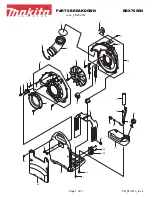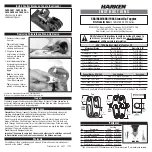
41
OpenSPR 1-Channel Operation Manual V4.1.01
through into the instrument [Figure 2.49]. The excess buffer will exit the Sample outlet
tube into the waste bottle.
Figure 2.49 Disposable syringe properly seated into injection port for buffer rinsing.
* Some conditions may require additional rinsing to completely clean the sample loop to
avoid cross contamination.
2.
Purge the Sample Loop with air.
Using the same buffer syringe, draw 0.5-1 mL of air in the syringe then insert the blunt
tipped needle into the injection port and push the air through the sample loop. The excess
buffer and eventually will exit via the outlet line, followed by air.
3.
Load a syringe with the sample/solution to inject.
For a standard 100 µL sample loop, at
least 150 µL of sample is required.
Insert the blunt tipped syringe fully into the injection port making sure it is seated, then
slowly depress the plunger to introduce your sample into the instrument [Figure 2.50].
Before removing the syringe from the injection port, wait at least 5 seconds with the
syringe stationary for the fluidic pressure to stabilize in the sample loop.
Figure 2.50 Glass syringe for 150 µL sample volume properly seated into OpenSPR.
















































